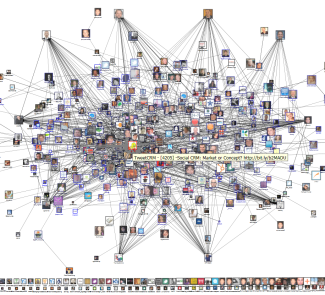The social network invasion has changed the way we do things; so much so that everyday actions like grocery shopping or mailing a letter are fading from memory.
The worldwide invasion by social networks has changed the way we do things. So much so that actions as mundane as doing the groceries or sending a letter are starting to fade from memory.
Answer this question: Where does the stamp go on the envelope, on the right or left? Now we do almost everything through the computer, phone or tablet. Even donations to charitable causes. Every day, it’s getting easier to help people and we express our sentiments through technology.
In this sense, we have to be very careful when we’re immersed in the social networks, because there are some very twisted people who want to take advantage of our weaknesses and good deeds. How? By creating fake Facebook pages for catastrophes, illnesses, etc. to steal our personal information. This is what we know as a “swindle”, but in this case, it’s a “cyber-swindle”.
On Facebook, we often “like” pages, photos or comments that make reference to charitable causes. One example would be the posts that say that if you share them on your wall, €1 will be donated to the operation of a very sick child who needs it, and that are shared automatically even if you don’t share them. Watch out! This is a practice called «likejacking” that is used by hackers to steal information. As soon as the web user clicks on the malicious link to see its content, a message is published on his or her wall automatically, with no type of consent, saying that the user “liked” the link.
![]()
Fake Facebook pages aren’t the only type of scam that plays with our hearts and the hearts of our devices: chain emails, WhatsApp groups, etc. How can can users protect themselves? Making sure that the initiatives are real by doing a little research on the web, consulting forums, etc.
But don’t give up hope. There are still lots of people and lots of non-profit organisations that use social networks properly and get the most out of their potential to help people with problems. This is the case of micro-donations from Teaming or the ‘Heart Inside’ application. These are two reliable initiatives with a lot of heart that turn our computers, phones and tablets into technology with a heart as well.
Technology with heart: Teaming and Heart Inside
Teaming is a charitable initiative that started in 1998 to collect donations of €1 a month for social causes. By combining these microdonations, the promoters of these actions are able to support and promote initiatives that individually would be unviable.
The history of this project is worth hearing. Jil Val Eyle is the brains behind the initiative, which came about as a result of his becoming a father. Jil’s daughter, Monica, the apple of his eye, was born with a serious condition called hydrocephalus. The lack of information on the condition and the desperation of Jil and his wife as parents, made them decide to seek alternatives to find solutions. He started contacting foundations and organisations to help people who were living through the same situation. It was then that he had the ingenious idea of group microdonations to help people or groups of people with problems.
Since then, the initiative hasn’t stopped growing, and more than 1,000 companies in 40 different countries now do “Teaming”, collecting an average of 200,000 euros a month.
The NGO Save the Children took note of this project and a few weeks ago presented to the world Heart Inside, a new campaign that seeks to revolutionise the donations market . It is an application that is installed on a computer or other device and that is a way to show our feelings of caring or concern for others.
It was precisely those feelings of concern for others that the company was targeting when it developed ‘Heart Inside’, a browser plugin that users install that turns each one of their online purchases into an automatic donation to Save the Children without doing anything; it doesn’t cost more and there are no additional steps in the purchase. Thanks to technology and the agreements that the NGO has reached with hundreds of e-commerce sites, this project is now possible.
Keeping in mind that in Spain, e-commerce moves more than 30 million euros every day, what would happen if we all installed ‘Heart Inside’? Simply put, we’d raise 600,000 euros every day for needy children. Hold onto that thought and consider all that we’re able to do thanks to technology with heart.









